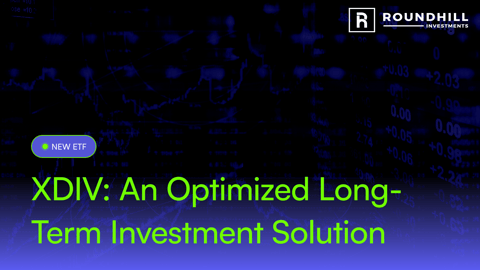The China Dragons Awaken
China’s Low Bar for Improvement
For the past few years, China’s equity market—particularly its tech sector—has been weighed down by regulatory crackdowns, weak consumer and business sentiment, and geopolitical concerns. With abundant pessimism creating an extremely low bar for improvement, appetite for China equities has returned.
Risk Appetite Emerging
The Peoples Bank of China (PBOC) has announced several money and fiscal stimulus measures in order to reinvigorate the Chinese economy. As we detailed in our October 2024 note “China Stimulus Spigots Catalyze Risk Appetite,” the PBOC has fired the stimulus bazooka and has expanded on its plans over the past few months. More recently, China’s central bank has reiterated its mission of yuan stability amid rising global trade tensions. Meanwhile China’s State Council announced a plan geared directly at the consumer with income increases and a childcare subsidy system.
Despite potential skepticism on the execution of the announced measures, investor enthusiasm is not based solely on lofty economic growth targets (though, we’d be remiss if we didn’t mention that the Citi China Economic Surprise Index is slowly rising).

East vs. West
AI and technological breakthroughs have further fueled a sharp rebound in Chinese equities, and it’s not just DeepSeek.
On the AI front, Alibaba released Qwen-2.5 Max in January 2025 and is viewed as a cost-effective market competitor to DeepSeek. Meanwhile, Chinese Automaker BYD reported its new battery and charging system was capable of providing around 400 kilometers (249 miles) of range in 5 minutes. Bloomberg recently reported that BYD’s revenue last year outpaced Tesla’s reported revenue.
Companies like Alibaba and BYD are benefiting from both renewed domestic demand and the global shift toward a bifurcated tech landscape. This marks the emergence of a “two-worlds” tech era, where Chinese firms are no longer just playing catch-up, but forging their own path. This sounds great, but how can investors capture this emerging momentum?
How To Play China
The challenge with investing in China is that most China ETFs have a dilution problem, leading to underweight exposure to the leaders driving innovation in China.

In our view, the growing bifurcation in eastern versus western technological leadership will fuel opportunities for Chinese companies with similar characteristics to the U.S.’s Magnificent Seven stocks.
Enter the Roundhill China Dragons ETF (DRAG). Year-to-date, DRAG is up 25% and has outperformed major China ETFs by having precise exposure to China’s tech leaders.

*You cannot directly invest in an index.
The performance data quoted represents past performance. Past performance does not guarantee future results. Current performance may be lower or higher than the performance data quoted. The investment return and principal value of an investment will fluctuate so that an investor's shares, when sold or redeemed, may be worth more or less than their original cost. Returns less than one year are not annualized. For the most recent month-end performance, please call (855) 561-5728. For more information, including current holdings and standardized performance: https://www.roundhillinvestments.com/etf/drag/
Targeting the Best of the Best
Launched in October 2024, the Roundhill China Dragons ETF targets the market leaders driving innovation in the Chinese economy. As of its most recent rebalance, DRAG provides equal weight exposure to China’s six foremost leaders in tech and innovation – Alibaba, BYD, Meituan, PDD Holdings, Tencent and Xiaomi. As of Friday’s close, each China Dragon traded at a market capitalization of more than $100 billion.
Meanwhile, the six China Dragons of Alibaba, BYD, Meituan, PDD Holdings, Tencent and Xiaomi have seen earnings per share and sales estimates revised at a faster pace than the average U.S. technology stock over the past 6-months.

What about valuation? The average next twelve month (NTM) price-to-earnings (PE) ratio for the six China Dragons is 19.5x, which could be compelling considering the average NTM PE for the S&P 500 Technology sector is 26.5x.

What Does the Chart Say?
Where can we go from here? Earlier this year, DRAG broke above its prior record high of $26.43 (10/7/24) and surged 42% over 28 trading days (1/10/25 to 2/21/25). Recently, DRAG is experiencing a healthy consolidation, while still being in a strong technical uptrend. A good traditional rule of thumb for price targets after breaking out of a range is the spread of the highest and lowest prices, and then add that to the breakout price. This would indicate DRAG could run to the $31.30-$31.65 zone before losing steam. Rallying off support here is the first important step.
Source: Bloomberg; Data as of April 1, 2025. Past performance does not guarantee future results.
DRAG: Your Preferred China ETF
While 2024 was the Year of the Dragon, we believe 2025 could be the year for the Roundhill China Dragons ETF. Stimulus measures, AI breakthroughs, and an improving regulatory environment have fueled a sharp rebound in Chinese equities, with tech giants leading the charge. Roundhill believes that concentrating exposure to the six largest, most innovative technology companies within China is the optimal approach for capturing the resurgent price momentum in Chinese equities.
Alibaba, BYD, Meituan, PDD Holdings, Tencent and Xiaomi are showcasing major technological breakthroughs and challenging the dominance of well-established technology companies of the West. Investors have taken notice. Most China ETFs available offer some exposure to the China Dragons, but the risk of diluted exposure hampers the quality and growth composition of your China allocation. In our view, the Roundhill China Dragons ETF (DRAG) is in prime position to capture the price action of China’s leading tech innovators while disrupting the China ETF landscape.
Investors should consider the investment objectives, risks, charges, and expenses carefully before investing. For a prospectus or summary prospectus, if available, with this and other information about the Fund, please call 1-855-561-5728 or visit our website at www.roundhillinvestments.com/etf/DRAG. Read the prospectus or summary prospectus carefully before investing.
China Risk. The Fund’s significant investments in instruments that provide exposure to Chinese companies subject the Fund to risks specific to China. China may be subject to considerable degrees of economic, political and social instability. China is an emerging market and demonstrates significantly higher volatility from time to time in comparison to developed markets. Over the last few decades, the Chinese government has undertaken reform of economic and market practices and has expanded the sphere of private ownership of property in China. However, Chinese markets generally continue to experience inefficiency, volatility and pricing anomalies resulting from governmental influence, a lack of publicly available information and/or political and social instability.
Chinese companies are also subject to the risk that Chinese authorities can intervene in their operations and structure. Internal social unrest or confrontations with neighboring countries, including military conflicts in response to such events, may also disrupt economic development in China and result in a greater risk of currency fluctuations, currency non-convertibility, interest rate fluctuations and higher rates of inflation.
China has experienced security concerns, such as terrorism and strained international relations. Additionally, China is alleged to have participated in state-sponsored cyberattacks against foreign companies and foreign governments. Actual and threatened responses to such activity and strained international relations, including purchasing restrictions, sanctions, tariffs or cyberattacks on the Chinese government or Chinese companies, may impact China’s economy and Chinese issuers of securities in which the Fund invests. Incidents involving China’s or the region’s security may cause uncertainty in Chinese markets and may adversely affect the Chinese economy and the Fund’s investments. Export growth continues to be a major driver of China’s rapid economic growth. Reduction in spending on Chinese products and services, supply chain diversification, institution of additional tariffs or other trade barriers (including as a result of heightened trade tensions or a trade war between China and the U.S. or in response to actual or alleged Chinese cyber activity) or a downturn in any of the economies of China’s key trading partners may have an adverse impact on the Chinese economy. The Fund’s portfolio may include companies that are subject to economic or trade restrictions (but not investment restrictions) imposed by the U.S. or other governments due to national security, human rights or other concerns of such government. So long as these restrictions do not include restrictions on investments, the Fund is generally expected to invest in such companies.
Chinese companies are not subject to the same degree of regulatory requirements, accounting standards or auditor oversight as companies in more developed countries. As a result, information about the Chinese securities in which the Fund invests may be less reliable or complete. Chinese companies with securities listed on U.S. exchanges may be delisted if they do not meet U.S. accounting standards and auditor oversight requirements, which would significantly decrease the liquidity and value of the securities. There may be significant obstacles to obtaining information necessary for investigations into or litigation against Chinese companies, and shareholders may have limited legal remedies. Chinese companies may also be subject to significantly weaker recordkeeping requirements than the requirements imposed upon U.S. companies.
Market Risk. Market risk is the risk that a particular security, or Fund Shares in general, may fall in value. Securities are subject to market fluctuations caused by such factors as economic, political, regulatory or market developments, changes in interest rates and perceived trends in securities prices.
Derivatives Risk. The use of derivative instruments (i.e. swap agreements and forward contracts) involves risks different from, or possibly greater than, the risks associated with investing directly in securities and other traditional investments. These risks include: (i) the risk that the counterparty to a derivative transaction may not fulfill its contractual obligations; (ii) risk of mispricing or improper valuation; and (iii) the risk that changes in the value of the derivative may not correlate perfectly with the underlying asset.
Active Management Risk. The Fund is actively-managed and its performance reflects investment decisions that the Adviser and/or Sub-Adviser makes for the Fund.
Depositary Receipts Risk. Depositary receipts may be less liquid than the underlying shares in their primary trading market. Any distributions paid to the holders of depositary receipts are usually subject to a fee charged by the depositary. Holders of depositary receipts may have limited voting rights, and investment restrictions in certain countries.
Swap Agreements Risk. The Fund may utilize swap agreements to derive its exposure to one or more of the China Dragons. Swap agreements may involve greater risks than direct investment in securities as they may be leveraged and are subject to credit risk, counterparty risk and valuation risk.
Consumer Discretionary Sector Risk. Consumer discretionary companies, such as retailers, media companies and consumer services companies, provide non-essential goods and services. These companies manufacture products and provide discretionary services directly to the consumer, and the success of these companies is tied closely to the performance of the overall domestic and international economy, interest rates, competition and consumer confidence. Success depends heavily on disposable household income and consumer spending.
Information Technology Companies Risk. Information technology companies face intense competition, both domestically and internationally, which may have an adverse effect on profit margins. Like other technology companies, information technology companies may have limited product lines, markets, financial resources or personnel. The products of information technology companies may face obsolescence due to rapid technological developments, frequent new product introduction, unpredictable changes in growth rates and competition for the services of qualified personnel.
Large Capitalization Risk. Large capitalization companies may be less able than smaller capitalization companies to adapt to changing market conditions.
New Fund Risk. The Fund is a recently organized investment company with a limited operating history. As a result, prospective investors have a limited track record or history on which to base their investment decision.
Non-Diversification Risk. As a "non-diversified" fund, the Fund may hold a smaller number of portfolio securities than many other funds.
Concentration Risk. The Fund is concentrated in the industry or group of industries comprising the consumer discretionary sector and communication services sector.
Roundhill Financial Inc. serves as the investment advisor. The Funds are distributed by Foreside Fund Services, LLC which is not affiliated with Roundhill Financial Inc., U.S. Bank, or any of their affiliates.
Glossary:
The Hang Seng Index is a free-float capitalization-weighted index of a selection of companies from the Stock Exchange of Hong Kong. The components of the index are divided into four subindices: Commerce and Industry, Finance, Utilities, and Properties. The index was developed with a base level of 100 as of July 31, 1964.
The MSCI China Index is a free-float weighted equity index. It was developed with a base value of 100 as of December 31, 1992. This index is priced in HKD. Please refer to M3CN Index for USD.
Standard and Poor's 500 Information Technology Index is a capitalization-weighted index. The index was developed with a base level of 10 for the 1941-43 base period.
The Citi Economic Surprise Indices measure data surprises relative to market expectations. A positive reading means that data releases have been stronger than expected and a negative reading means that data releases have been worse than expected.




